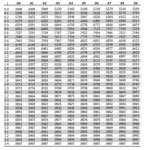StatsBeginner
New member
- Joined
- Nov 10, 2018
- Messages
- 2
Hello,
I really need help with my statistics homework.
1. Add 50 to each value in this list, and thus derive a completely new list of values. Calculate the mean and st. deviation of the new list of values. Now take the value 94 and calculate its z-value with regards to the mean of the first distribution (old list) and then with regards to the mean of the second distribution (new list). To which distribution is it more likely to belong? What is the probability that you are making an error when you say it belongs to one or the other distribution (Type I and Type II errors)?
You can ignore the first part of the question. I have the values but I don't know how to find the probability for type 1 and type 2 errors.
Z-value of 94 using the mean of the first distribution (old list) is 1.91548. Mean = 50.0159
Z-value of 94 using the mean of the second distribution (new list) is -2.00396. Mean = 100.0159
How do I find the probability of type 1 and type 2 errors? Just give me an idea because at the moment I just can't comprehend the concept.
2. Align the two distributions so that the probability of making both the Type I and Type II errors are 1% (alpha = 0.01 and beta = 0.01) by manipulating the number of participants (n). What is the number of participants you need to achieve this and for what value these two error rates are aligned?
I'm completely lost in this one? Please put me on the right track.
I really need help with my statistics homework.
1. Add 50 to each value in this list, and thus derive a completely new list of values. Calculate the mean and st. deviation of the new list of values. Now take the value 94 and calculate its z-value with regards to the mean of the first distribution (old list) and then with regards to the mean of the second distribution (new list). To which distribution is it more likely to belong? What is the probability that you are making an error when you say it belongs to one or the other distribution (Type I and Type II errors)?
You can ignore the first part of the question. I have the values but I don't know how to find the probability for type 1 and type 2 errors.
Z-value of 94 using the mean of the first distribution (old list) is 1.91548. Mean = 50.0159
Z-value of 94 using the mean of the second distribution (new list) is -2.00396. Mean = 100.0159
How do I find the probability of type 1 and type 2 errors? Just give me an idea because at the moment I just can't comprehend the concept.
2. Align the two distributions so that the probability of making both the Type I and Type II errors are 1% (alpha = 0.01 and beta = 0.01) by manipulating the number of participants (n). What is the number of participants you need to achieve this and for what value these two error rates are aligned?
I'm completely lost in this one? Please put me on the right track.

